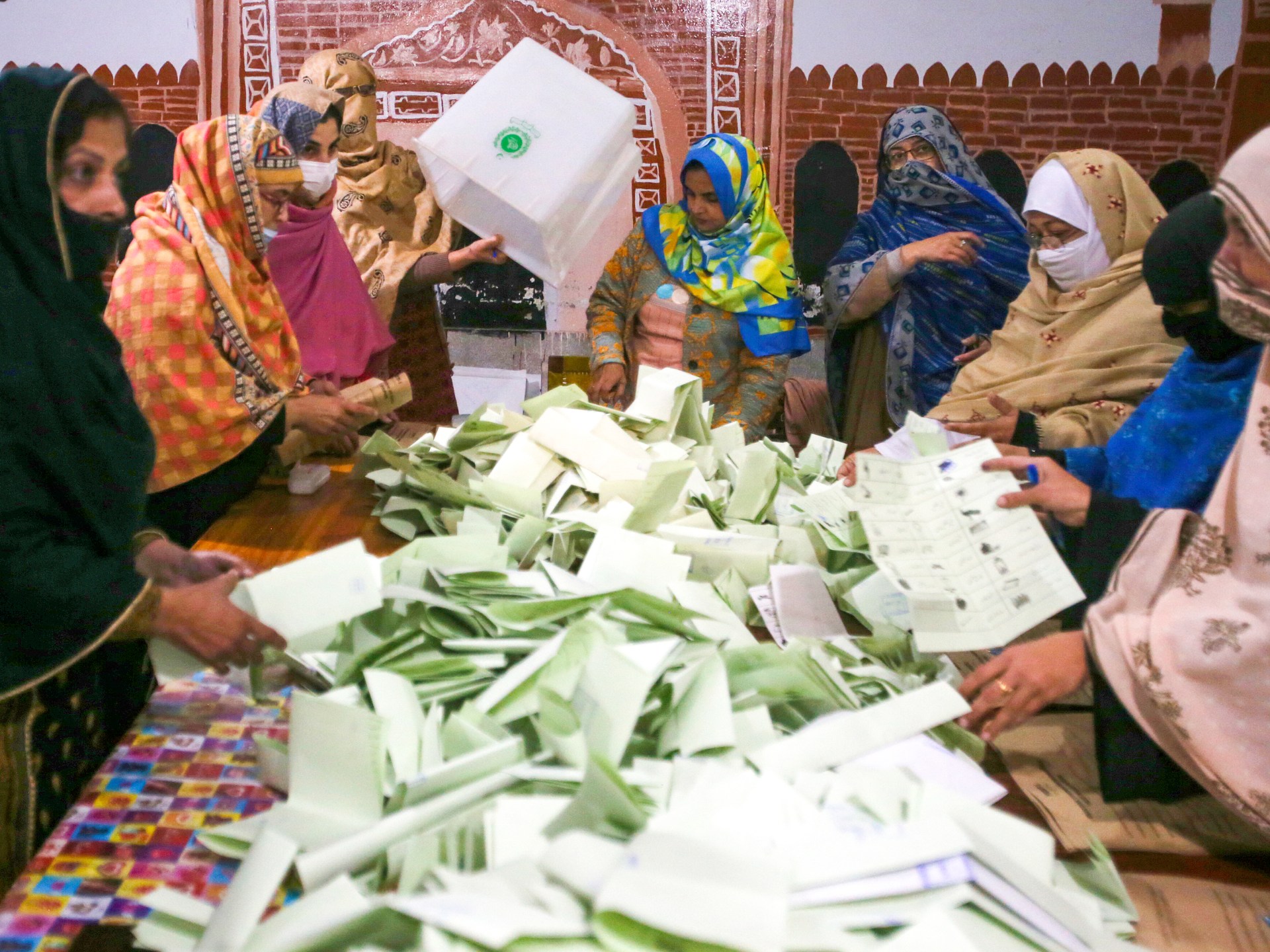Why an Israeli raid on al-Aqsa Mosque is stoking tensions
Known to Jews as the Temple Mount and to Muslims as the Noble Sanctuary — which encompasses al-Aqsa — the site at the center of the tensions is revered in both faiths. Even the slightest perceived change to the status quo has the capacity to provoke violence.
Police raided the site in early April in the middle of the Muslim holy month of Ramadan, just before the start of the Jewish Passover holiday — an overlap Israeli security officials have long warned could lead to further escalation.
But the new national security minister, Itamar Ben Gvir, leader of Israel’s far-right religious nationalist movement, has pushed for a greater Jewish presence at Temple Mount. Ben Gvir is known for making provocative moves to assert Jewish claims to Palestinian land or religious spaces.
In January, he made a tone-setting tour of the ancient religious compound, in the first such visit in years by a top Israeli official.
Here’s what to know about the site.
What is the religious significance of the site?
Green Line
(under 1949
armistice
accord)
Sources: Ir Amim, B’Tselem, satellite imagery via Planet

Green Line
(under 1949
armistice
accord)
Sources: Ir Amim, B’Tselem, satellite imagery via Planet

Green Line
(under 1949
armistice
accord)
Sources: Ir Amim, B’Tselem, satellite imagery via Planet
The compound holds religious significance for Muslims, Jews and Christians.
It’s the holiest site in Judaism. The historical origins of the site are disputed among archaeologists, but in the Jewish tradition, a religious structure known as the First Temple was built on the hill during the reign of King Solomon in the 10th century B.C. The temple, around which the ancient Jewish faith was centered, and the one that followed it were destroyed when invading empires sacked Jerusalem.
“For Jews, it is the most sacred place in Jewish history and actually symbolizes the clearest contact between modern Israel and ancient Israel,” said Amichai Cohen, senior fellow at the Israel Democracy Institute.
In both Jewish and Muslim traditions, it’s known as the place where Abraham offered to sacrifice his son. Jews, by custom, pray facing Jerusalem, and in particular the Temple Mount. The Western Wall, a retaining wall outside the al-Aqsa compound, has long been venerated as a focal point for Jewish prayer.
For Muslims, the Noble Sanctuary is the third-holiest site, after mosques in Mecca and Medina in Saudi Arabia. Al-Aqsa is seen as the place from which the prophet Muhammad ascended to heaven after making a miraculous one-night journey from Mecca to Jerusalem. The mosque was built on the southern part of the plaza in the early 8th century A.D. Across the courtyard is the Dome of the Rock, an ornate Islamic shrine, with a golden dome visible across much of the city.
Who is in charge of the compound?
Israel captured East Jerusalem from Jordan during the Arab-Israeli war in 1967 and later declared all of Jerusalem to be Israel’s capital — a move not recognized by most of the international community. Since 1967, a religious trust funded and supervised by Jordan has managed the al-Aqsa compound, an arrangement formalized in a 1994 peace treaty between Israel and Jordan.
Israel has security authority at the site and maintains a police presence. Non-Muslims are allowed to visit but are barred from praying there.
Why is it considered a flash point for conflict?
The site lies at the heart of the struggle between Israelis and Palestinians for control of Jerusalem. The status of the city has proved a sticking point in efforts to reach a two-state solution to the conflict, and al-Aqsa has become a symbol of the Palestinian quest for self-determination.
The mosque is “the most important religious site for Muslims in Palestine and it is absolutely central to Palestinian identity,” said Khaled Elgindy, a Palestinian affairs expert at the Middle East Institute.
Violations of the status quo have been interpreted by many Palestinians as acts of aggression. A visit by Ariel Sharon, then Israel’s opposition leader, to the site in 2000 helped spark the second intifada, also known as the al-Aqsa Intifada — a 4½-year Palestinian uprising during which more than 3,000 Palestinians and 1,000 Israelis were killed.
In recent years, Israel’s installation of metal detectors at the compound provoked a violent backlash in 2017. And members of an emboldened Israeli religious nationalist movement have increasingly ventured onto the plaza, often joined and encouraged by Ben Gvir.
Jordan issued a formal complaint to Israel in April 2021 about large groups of Jewish visitors violating the status quo. The following month, Ben Gvir’s support for settlers in an East Jerusalem neighborhood helped catalyze an 11-day war between Israel and Hamas, the Islamist militant group that rules Gaza.
“Every time a minister or a Knesset member or a member of an extremist settler group goes up to the al-Aqsa compound, they are eroding the status quo,” Elgindy said.
Rights groups also say Israeli security forces are quick to storm the site and to fire tear gas and rubber bullets at protesters.
Are Jews divided over whether to pray there?
A “very large majority” of religious and more secular Jewish Israelis refrain from going to the Temple Mount, Cohen said. Given how easily inflamed tensions there can become, many feel that Jews should avoid the area so as to not provoke Palestinians and stoke another round of violence.
But there are also religious reasons some Jews believe it’s important to stay off the Temple Mount. Many orthodox leaders say Jews should not walk on the “Holy of Holies,” part of the site of the historic Jewish temples there. Jews from all over the world visit and pray at the adjoining Western Wall.
Why is far-right minister Ben Gvir focused on the site?
A provocateur with a penchant for igniting media firestorms, Ben Gvir is a key player in the most right-wing government in Israel’s history. Palestinian groups and Arab nations called his visit to the site in January an intentional provocation, raising the potential for further unrest.
Prime Minister Benjamin Netanyahu’s office has reiterated that he is committed to upholding the status quo. But Ben Gvir, his ally in government, has long advocated for changing the arrangement. Known for his Jewish supremacist views, he has been convicted of inciting racism against Arabs and supporting a terrorist group.
“Ben Gvir is the politician that has gained most from challenging the existing policy on Temple Mount,” Cohen said.
Ben Gvir has previously supported activists who threatened to slaughter a lamb in the al-Aqsa Mosque compound during Passover — a move that would upend the status quo at the site and which police have warned could spark a regional war.
The messianic “Returning to the Mount” movement has offered tens of thousands of Israeli shekels to anyone who attempts to sacrifice a lamb at the site for Passover.
Police have stopped activists from doing so in the past — but Ben Gvir now controls the force. Police detained people suspected of intending to slaughter lamb or goats at the site in April.
Shira Rubin in Tel Aviv, Louisa Loveluck in Jerusalem, Niha Masih in Seoul and Miriam Berger in Washington contributed to this report.
Check out our Latest News and Follow us at Facebook
Original Source






